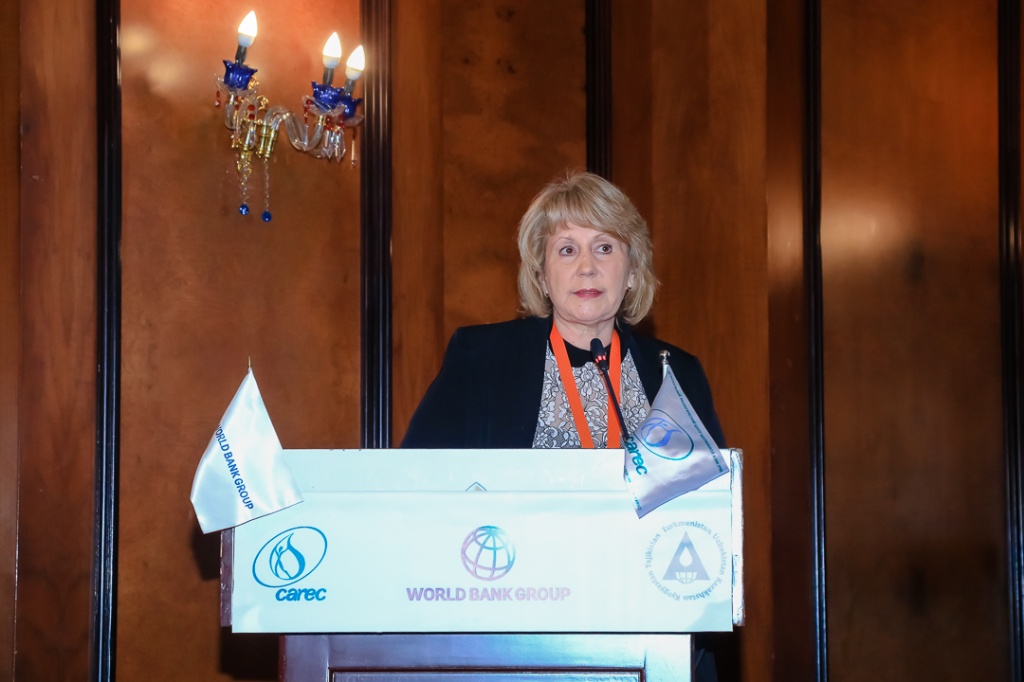At the Central Asian Conference on Climate Change, which was held in Almaty on January 24 and 25, 2018, Deputy Head of the Environmental Pollution Monitoring Service Natalya Agaltseva commented on the situation with adaptation to climate change in Uzbekistan.
Speaking about the consequences of climate change in Uzbekistan, Ms. Agaltseva noted increased duration of the dry hot season, increase in the number of days with temperatures above 40ºC, reduction in the mountain snow reserves and degradation of glaciers, increased frequency of climate-dependent hazard phenomena such as mudflows, floods, droughts and low water levels. According to experts, global warming will further increase the frequency of periods of droughts and high summer temperatures and change the regime of water resources formation. Such extreme signs of climate change can lead to increased scarcity of water resources and increased risks associated with a lack of water in agricultural production and a shortage of drinking water in the arid regions of Uzbekistan.
 - Which measures do you consider the most relevant for adaptation to climate change in Uzbekistan?
- Which measures do you consider the most relevant for adaptation to climate change in Uzbekistan?
- Adaptation to climate change is an urgent problem for Uzbekistan, because water resources are very sensitive to climate change. Important measures in adaptation to climate change and climate risk management are implementation of organizational and technical measures to introduce integrated water resources management, reduction of unproductive water losses and improvement of the efficiency of land and water resources use, improvement of the technical condition of the irrigation and collection and drainage networks and improvement of the meliorative state of irrigated lands, introduction of advanced irrigation methods and techniques, introduction of drought-resistant and productive varieties of agricultural crops.
______________________________________________
Thus, water resources saving became one of the main topics for discussion at the Central Asian Environmental Forum, which was held on June 5-7, 2018, in Tashkent, Uzbekistan. As the Deputy Prime Minister of Uzbekistan Nodir Otazhonov noted in his speech, “according to the World Bank forecasts, water deficit in the region is expected to reach 25-30% by 2050, against the backdrop of the expected demographic increase of up to 90 million people. At the same time, the demand for water resources used for irrigated agriculture can increase by 30% by 2020. According to UN experts, the economic benefits from rational water use in Central Asia can reach 5% of the regional gross domestic product, or about $20 billion.” Thus, we can see that water saving objective requires immediate decisions in the region.
______________________________________________
- What can it lead to in the future?
- In the context of future climate change, this problem will be aggravated.
The society is already aware of the need for drastic actions to address water problems and mitigate water shortage. People start to rethink the principles of water use and search for appropriate and adequate measures to overcome the established stereotypes in the management of natural resources. It is noteworthy that the lack of water in recent years, when water is valued more than ever, makes each of us think about what we can do personally to improve the situation and return to the traditions of careful attitude to water.
In addition, today we are facing drought problems and, as the future climate situation development scenarios show, drought will increase. It will become deeper and can cover vast territories. This will affect both food security and livelihoods of the population. Therefore, adaptation measures aimed at alleviating the water deficit are very important. It is necessary to develop and implement early warning systems to increase readiness to droughts.
- What measure are being taken to protect agriculture?
- No other type of economic activity is affected by the climate more than agriculture. There is reason to believe that this dependence is still there and will increase in the future. Many climatic scenarios and forecasts emphasize that the change in climatic conditions will be associated with a change in the frequency of phenomena that are unfavorable for agriculture. There is a risk of increased probability of low yields caused by increased frequency of droughts and aridity in the region.
Much attention is paid in the country to water saving and rational use. Adaptation to climate change should be aimed at maximizing potential benefits and minimizing losses.
- How will this affect the health of the population? Are you taking any measures in that area?
- The impact of climate change on public health is definitely an important issue. There is a close connection between water quality and people’s health. Bacterial contamination of water increases in higher temperatures and leads to increased number of gastrointestinal diseases in summer. For example, the number of bacillary dysentery cases increases in summer. Much attention is paid in Uzbekistan to raising awareness of the local population about the health risks associated with climate change and preventive measures against climate-sensitive diseases.
The result of the work done is a reduction in the number of acute gastrointestinal, cardiovascular and respiratory diseases caused by climate change. People’s awareness has been raised about preventive measures to minimize the possible destructive effects on human health.
______________________________________________
Thus, Uzbekistan pursues an active policy of adaptation to climate change to protect the population from the effects of water deficit. The Agriculture Development Program for 2015-2019 provides for measures aimed at development of new highly efficient salt- and drought-resistant varieties of cotton and grain crops, which should reduce the risk of food shortages. In addition, there is also a Comprehensive program for mitigation of consequences of the Aral Sea disaster for 2015-2018, under which it is planned to plant about 1.0 million hectares of forests on the dried bottom of the Aral Sea. In other words, we see that the Republic of Uzbekistan is pursuing an active policy of building adaptive potential to reduce the social and economic risk of the negative impact of climate change.
_____________
Climate Adaptation and Mitigation Program for the Aral Sea Basin (CAMP4ASB)
![]()